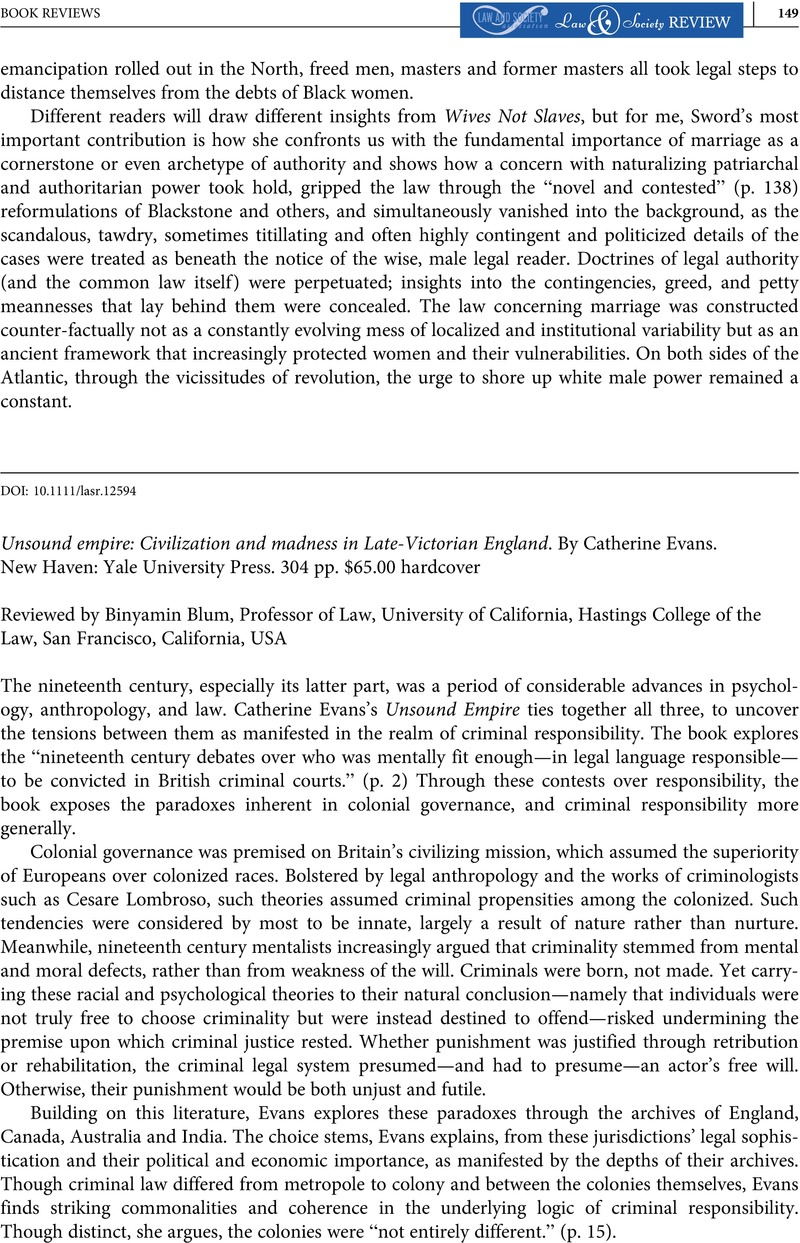No CrossRef data available.
Article contents
Unsound empire: Civilization and madness in Late-Victorian England. By Catherine Evans. New Haven: Yale University Press. 304 pp. $65.00 hardcover
Review products
Unsound empire: Civilization and madness in Late-Victorian England. By Catherine Evans. New Haven: Yale University Press. 304 pp. $65.00 hardcover
Published online by Cambridge University Press: 01 January 2024
Abstract
An abstract is not available for this content so a preview has been provided. Please use the Get access link above for information on how to access this content.

- Type
- BOOK REVIEWS
- Information
- Copyright
- © 2022 Law and Society Association.


